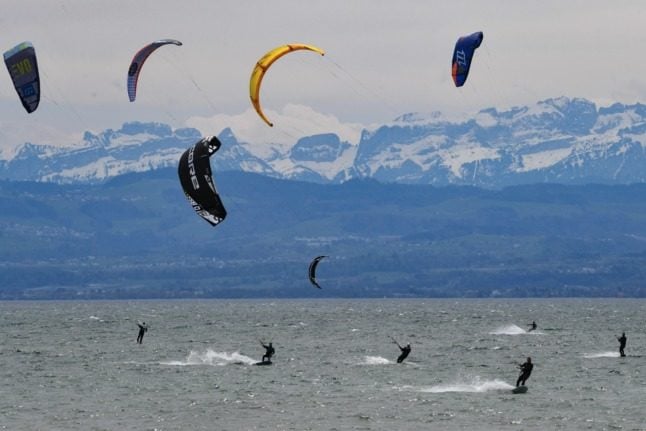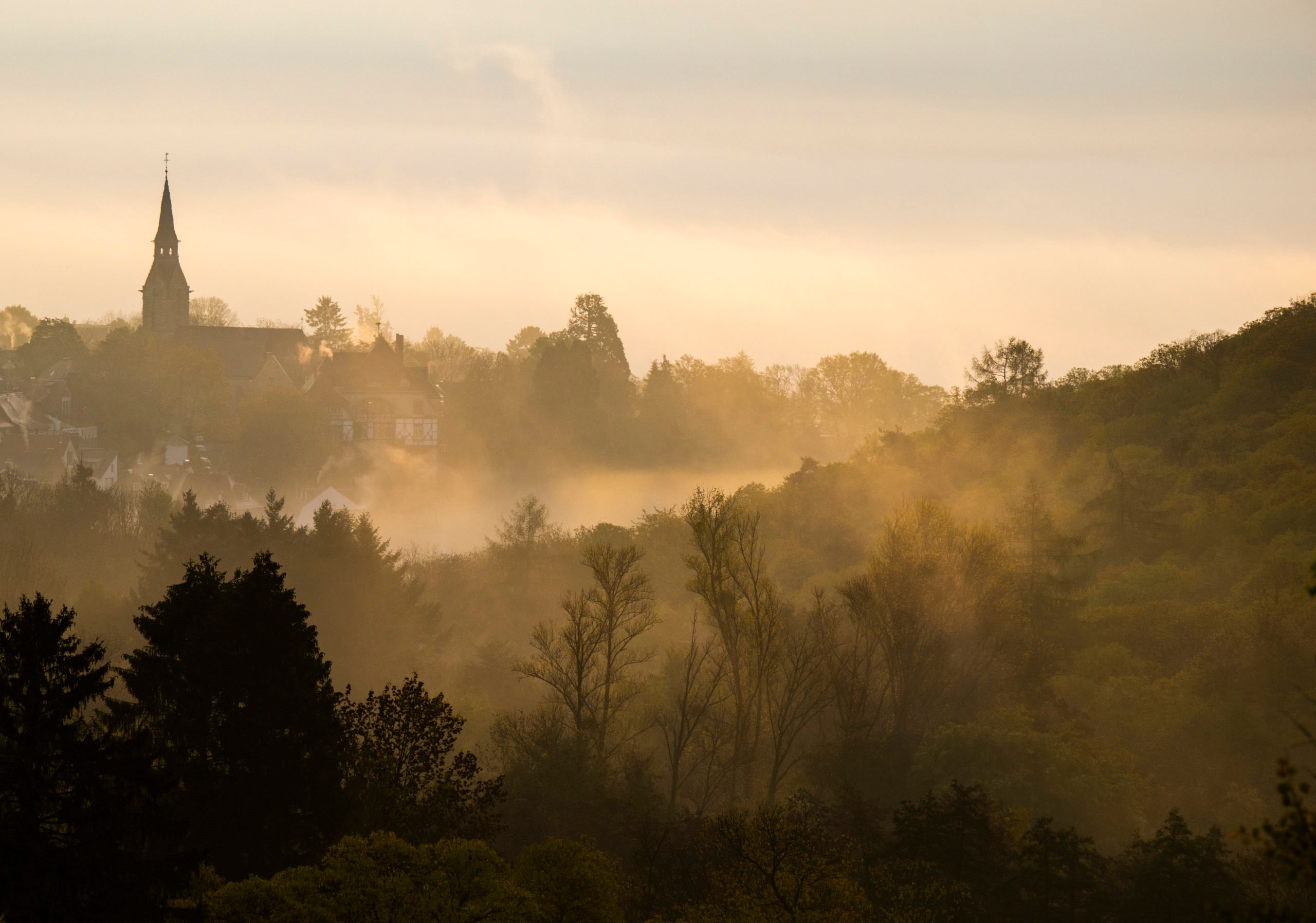With the vaccine rollout accelerating across the country and recent emergency measures helping to bring cases down in most areas, it is likely there will be more freedom to travel around the country in the coming months.
READ ALSO: How freely will people be able to travel to and from Germany this summer?
Here we have put together a collection of the best activities across Germany you can still enjoy this summer, despite some restrictions still being in place.
Escape the capital at Weißer See
On a sunny day in Germany’s capital, the people of Berlin will often flock to the surrounding lakes to enjoy the sun and a dip in the chilly waters. One such destination is the Weißer See.
Just northeast of the city, you will find this expansive lake, complete with walking trails, boat rentals and a swimming area.
You can relax on the beach at Strandbad Weißensee, where there is a chance to venture out into the calm water to cool off from the sun.
View this post on Instagram
Beach opening hours and pricing
Explore the oldest town in the country
Located on the Moselle river, not far from the border with Luxembourg, Trier is one of the country’s most significant sites. The small city, which has a population of just over one hundred thousand, is a treasure trove of Roman ruins.
Trier once served as the key city of the Roman northern territories, but was first founded by the Celts in the fourth century BCE. It was then conquered by the Romans around three hundred years later.
As the city centre is quite small, most of the sites are within walking distance from each other, so the city is a great destination for a weekend break without a car. There is also a mini train called the Römer Express which takes visitors on a 35 minute tour of the old town.
The Porta Nigra is the only remaining original city gate and climbing to the top provides an impressive view over the city, particularly on a clear day. Trierer Dom, the oldest cathedral in Germany, is also well worth a visit, and is now a UNESCO World Heritage Site.
Trier is the birthplace of Karl Marx and there is plenty of opportunity to explore his influence on the city. The Karl Marx House, where he was born, is now open to the public and has become an education centre.
Surf on the Eisbach in Munich
You may not associate the landlocked city of Munich with the surfing scene, but if you haven’t watched the surfers catching the waves on the Eisbach – or even tried it yourself – you’ve been missing out.
Located just at the entrance to the English Gardens, right in the centre of the city, you will find the best city centre location for river surfing.
View this post on Instagram
The man-made river emerges from underground next to the Haus der Kunst modern art museum. The stone step at the outlet creates a consistent wave about a metre and a half high, making the Eisbach a favourite spot for surfers for the last forty years.
In the summer months, you can take a dip in the water after a surf and be carried through the gardens by the natural gentle rapids of the river.
Sail on Germany’s largest lake
Bodensee, often called Lake Constance in English, is the largest lake in Germany, and Europe’s third largest freshwater lake. The waters straddle the border between Germany, Austria and Switzerland.
The lake is fed by the Rhine and sits at the foot of the Alps, providing some beautiful scenery. It is one of Germany’s most popular holiday destinations, particularly because of the range of activities on and around the lake.
You can explore the mountainous surroundings of the lake by hiking, mountain biking or rock climbing and there are plenty of small villages around the lake to stay for a night or two, as well as larger cities such as Konstanz. If you are looking to get even closer to nature, there are many sites to pitch a tent close to the waterside.
Walk the length of the Elbe tunnel
Hamburg, Germany’s second largest city, is definitely worth a visit as there is plenty to do even with social distancing measures in place. One such activity is walking the length of the old Elbe tunnel.
The original tunnel, built in 1911, was installed to more easily connect dock workers with the banks of the Elbe. It was extremely innovative at the time of its construction and first became a tourist attraction in the 70s, when a new tunnel was built.
View this post on Instagram
It is now fully open to the public and pedestrians and cyclists wishing to cross below the river can use the free lift to drop down into the tunnel, which is 24 metres below the ground.
The tunnel has been preserved as a historic site since 2003, so is beautifully kept. Well below the ground, you can appreciate its art-deco style as well as the artwork that now lines the walls.
Explore the university city of Heidelberg
Known for its beauty and gothic architecture, the university town of Heidelberg is not to be passed over. Nestled on the river Neckar in Baden-Württemberg, the city is about eighty kilometers south of Frankfurt.
The university, founded in 1386, is the oldest in Germany and one of the most reputable educational institutions in Europe. It is particularly known as a hub of scientific excellence.
READ ALSO: Weekend Wanderlist: Strolling through the hills of Heidelberg
Heidelberg is a great city for romantics, with a beautiful cityscape including the Heidelberg Castle and the Baroque old town. Indulge your inner poet by walking the Philosopher’s way, a path along the edge of a mountain with views across the whole city – it is said to have inspired a number of philosophers and writers of the romantic period.
Visit the Ostsee
Though you may not associate Germany with beach holidays, the Ostsee is home to some of the most beautiful coastal scenery you can find. The German Baltic coast is three hundred and fifty kilometers long and boasts almost endless sandy beaches.
There are also more rugged rocky beaches, as well as areas set out for kitesurfing and other water sports. For those brave enough to engage with Germany’s love of nudity, there are also a number of FKK beaches along the coast.
READ ALSO: The dos and don’ts of public nudity in Germany
This area of Germany is popular for holidaymakers and the beaches may be quite busy at peak times of the season. One of the key features of the beaches are the famous wicker deck chairs (Strandkörbe) – make sure you visit at a less busy time to make the most of these!
The islands off the Baltic coast are also well worth a trip. Rügen is Germany’s largest island and is known for its long sandy beaches, nature reserves and white chalk cliffs.
View this post on Instagram
Go deep into the Harz mountains
The Harz mountains stretch from the southeast corner of Lower Saxony into Saxony-Anhalt and Thuringia. This is a great destination for nature lovers, ramblers and history buffs alike.
As well as protected nature areas, the highland area is home to medieval towns, castles and fortresses that look like they were plucked straight from a fairy tale.
There are plenty of places to stay in and around the area’s medieval towns, as well as campsites throughout the mountain range.
The mountains boast some of Germany’s most unusual wildlife – look out for wild boar and lynxes as you explore the National Park. Harz’s highest mountain, Mount Brocken, is engulfed by mist for around 300 days of the year. If you brave the climb to the top, you can experience the strange sensation of seeing your shadow projected onto the fog.
Live out a fairy tale in the Black forest
You have probably heard of the Black Forest, or at least its namesake cake the Schwarzwälder Kirschtorte (Black Forest gateau), but you might not have it pegged as a travel destination.
The Black Forest is perhaps best known as the setting for many of the most famous Brothers Grimm fairy tales, including Sleeping Beauty, Rapunzel and Hansel and Gretel. The huge forest really does have a sense of magic within it and offers a sprawling woodland dotted with market towns, spas and lakes.
Located in the southwest of Germany, near to the French border, the forest has an area of over six thousand square kilometers. It is worth planning your visit carefully, as you definitely will not be able to explore the whole forest!
READ ALSO: Weekend Wanderlust: Chasing a hoax across the Black Forest
The small town of Triberg is a popular destination within the forest, known particularly for the Erste Weltgrößte Kuckucksuhr giant cuckoo clock. It is also home to the museum of Black Forest culture and the Triberg Falls, the highest waterfall in Germany.
Explore Saxony’s historical capital
Dresden, close to the Czech border, is the capital of Saxony and sits on the river Elbe. The skyline of the city is particularly beautiful, and can be seen reflected in the water on bright days.
View this post on Instagram
As you walk through the city, you will be surrounded by intricate baroque architecture, as Dresden was once the royal residence for the kings of Saxony. It was once known as the architectural and cultural hub of the empire and known colloquially as the Jewel Box.
Eighty five percent of the city centre was destroyed in the bombings of World War Two, but this should not put you off visiting. The old town was painstakingly restored across the second half of the twentieth century.
Although the city is large, most sights are walkable from each other. The domed Frauenkirche church rises above the city, and is just a short walk from the banks of the river. The Zwinger area, a palatial complex that houses a wealth of galleries and museums, gardens and courtyards will keep you occupied all day.




 Please whitelist us to continue reading.
Please whitelist us to continue reading.
Member comments